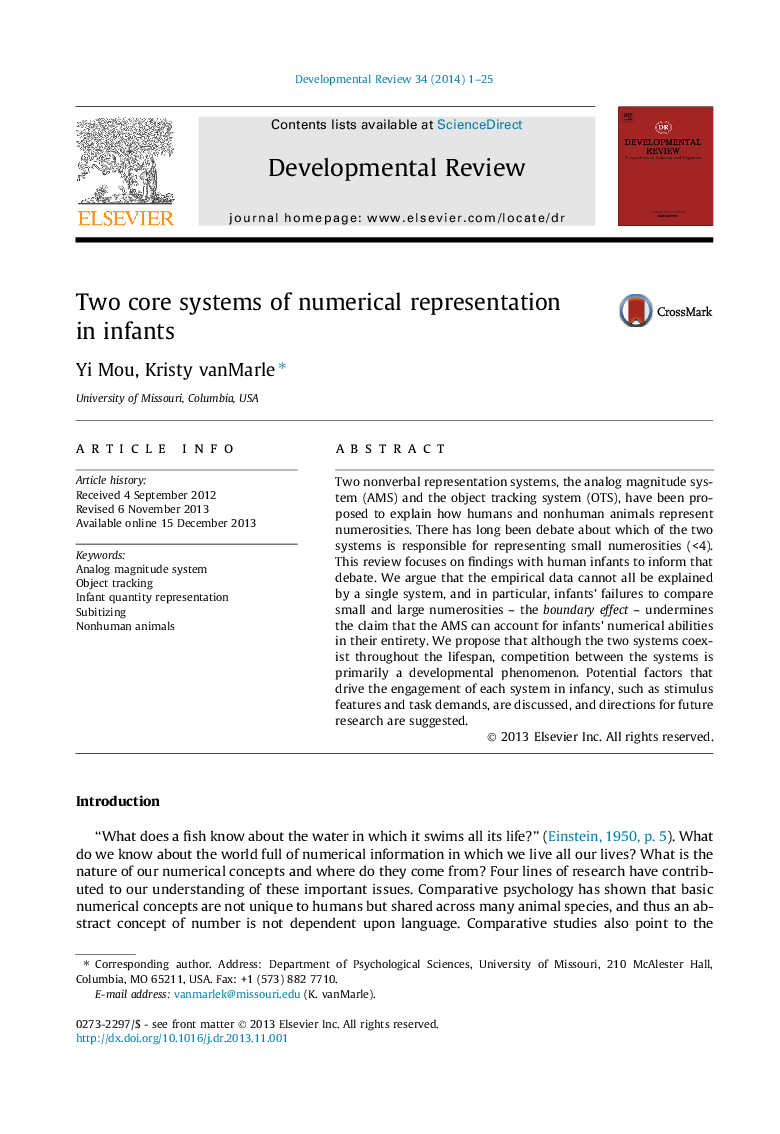| Article ID | Journal | Published Year | Pages | File Type |
|---|---|---|---|---|
| 353501 | Developmental Review | 2014 | 25 Pages |
•We review the evidence for analog magnitudes and object tracking system.•Both systems coexist throughout lifespan, but compete primarily in infancy.•We explore potential factors driving the engagement of each system.
Two nonverbal representation systems, the analog magnitude system (AMS) and the object tracking system (OTS), have been proposed to explain how humans and nonhuman animals represent numerosities. There has long been debate about which of the two systems is responsible for representing small numerosities (<4). This review focuses on findings with human infants to inform that debate. We argue that the empirical data cannot all be explained by a single system, and in particular, infants’ failures to compare small and large numerosities – the boundary effect – undermines the claim that the AMS can account for infants’ numerical abilities in their entirety. We propose that although the two systems coexist throughout the lifespan, competition between the systems is primarily a developmental phenomenon. Potential factors that drive the engagement of each system in infancy, such as stimulus features and task demands, are discussed, and directions for future research are suggested.
